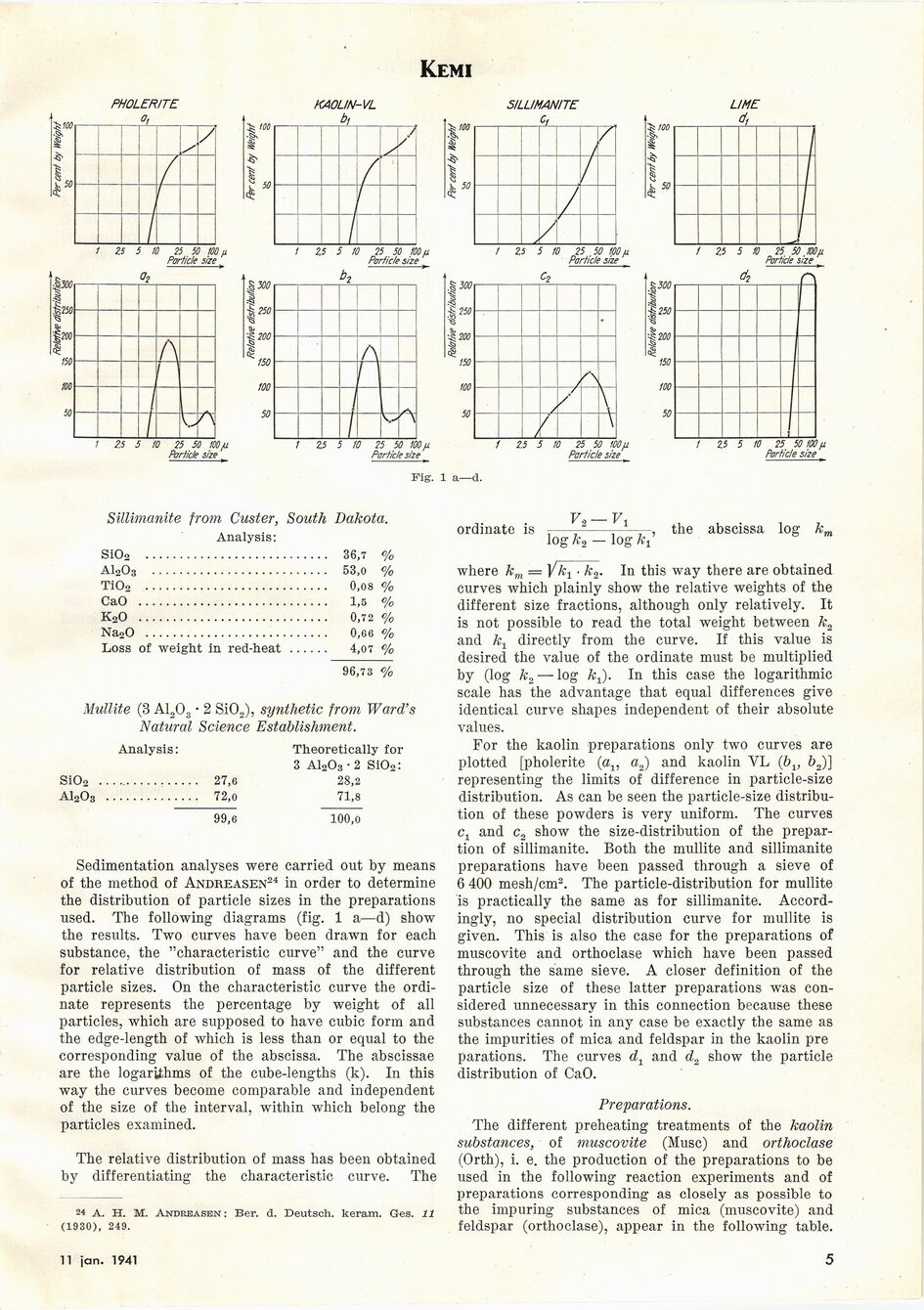
Full resolution (JPEG) - On this page / på denna sida - Sidor ...

<< prev. page << föreg. sida << >> nästa sida >> next page >>
Below is the raw OCR text
from the above scanned image.
Do you see an error? Proofread the page now!
Här nedan syns maskintolkade texten från faksimilbilden ovan.
Ser du något fel? Korrekturläs sidan nu!
This page has never been proofread. / Denna sida har aldrig korrekturlästs.
Kemi
Fig. 1 a—d.
Sillimanite from Custer, South Dakota.
Analysis:
Si02 ......................................................36,7 %
AloOü ....................................................53,0 c/o
Ti02 ......................................................0,08 %
CaO ........................................................1,5 %
KoO ........................................................0,72 o/0
Nan O ......................................................0,66 %
Loss of weight in red-heat ............4,07 %
96,73 o/0
Mullite (3 A1203 • 2 Si02), synthetic from Ward’s
Natural Science Establishment.
ordinate is
Analysis:
Si02 .
A12Os
27,6
72,o
Theoretically for
3 A1203 • 2 Si02:
28,2
71,8
99,6
100,o
V2 - Vi
log k2 — log kl
the abscissa log kn
Sedimentation analyses were carried out by means
of the method of Andreasen24 in order to determine
the distribution of particle sizes in the preparations
used. The following diagrams (fig. 1 a—d) show
the results. Two curves have been drawn for each
substance, the "characteristic curve" and the curve
for relative distribution of mass of the different
particle sizes. Ön the characteristic curve the
ordinate represents the percentage by weight of all
particles, which are supposed to have cubic form and
the edge-length of which is less than or equal to the
corresponding value of the abscissa. The abscissae
are the logarithms of the cube-lengths (k). In this
way the curves become comparable and independent
of the size of the interval, within which belong the
particles examined.
The relative distribution of mass has been obtained
by differentiating the characteristic curve. The
24 A. H. M. Andreasen: Ber. d. Deutsch. keram. Ges. 11
(1930), 249.
where k.m = |/k ! • k2- In this way there are obtained
curves which plainly show the relative weights of the
different size fractions, although only relatively. It
is not possible to read the total weight between k2
and k1 directly from the curve. lf this value is
desired the value of the ordinate must be multiplied
by (log k2 — log Äj). In this case the logarithmic
scale has the advantage that equal differences give
identical curve shapes independent of their absolute
values.
For the kaolin preparations only two curves are
plotted [pholerite (a1? a2) and kaolin VL (bv b2)]
representing the limits of difference in particle-size
distribution. As can be seen the particle-size
distribution of these powders is very uniform. The curves
cx and c, show the size-distribution of the
prepar-tion of sillimanite. Both the mullite and sillimanite
preparations have been passed through a sieve of
6 400 mesh/cm2. The particle-distribution for mullite
is practically the same as for sillimanite.
Accord-ingly, no special distribution curve for mullite is
given. This is also the case for the preparations of
muscovite and orthoclase which have been passed
through the same sieve. A closer definition of the
particle size of these latter preparations was
con-sidered unnecessary in this connection because these
substances cannot in any case be exactly the same as
the impurities of mica and feldspar in the kaolin pre
parations. The curves d1 and d2 show the particle
distribution of CaO.
Preparations.
The different preheating treatments of the kaolin
substances, of muscovite (Musc) and orthoclase
(Orth), i. e. the production of the preparations to be
used in the following reaction experiments and of
preparations corresponding as closely as possible to
the impuring substances of mica (muscovite) and
feldspar (orthoclase), appear in the following table.
11 jan. 1941 7
<< prev. page << föreg. sida << >> nästa sida >> next page >>